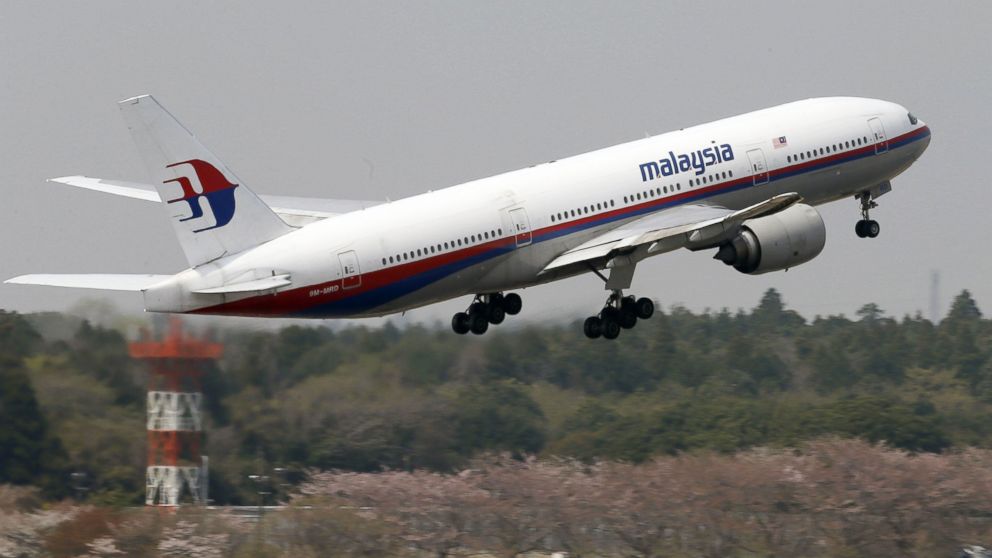U.S. law enforcement and intelligence officials are focusing on the
possibility that at least one of the Malaysia Airlines pilots is
responsible for the disappearance of flight MH 370 after new information
revealed the plane performed "tactical evasion maneuvers" after it
disappeared from radar, two senior law enforcement officials told ABC
News today.
U.S. authorities believe only a person with extensive flight or
engineering experience could have executed the maneuvers. They also are
suspicious of what appeared to be attempts to evade radar.
After the plane's transponder -- which reports the plane's location and
altitude -- was turned off about 1:20 a.m. last Saturday, the plane was
picked up by military radar as it turned back towards Malaysia and
passed above Peninsular Malaysia before heading into the Strait of
Malacca.

After a week of scrutinizing passengers and the crew, one of the
officials said there were no indications anyone besides the pilots had
the ability to perform the complicated maneuvers done by the plane.
Furthermore, officials said they have found no link between the
passengers and known terrorist groups and that the plane could have been
flown into a densely populated area if the incident was related to
terrorism -- but it wasn't.
Another possibility that can't be ruled out is that the pilots were coerced or made to redirect the plane by force.
ABC News aviation expert and former Marine Corps fighter pilot Steve
Ganyard said it's possible that the movements made by the plane could
mean it was piloted by amateurs not used to flying at night.
Ganyard said a person trying to fly a plane without lights or a horizon
could make random turns that may appear to be evasive but were just
accidental.
"[A hijacker could] tell the pilot 'turn the transponder off' and hold a
gun to his head," Ganyard said. "They could advertently fly out to sea
hoping to see some to land to go towards."
Ganyard also noted that the hijackers of United Flight 93 on Sept. 11
raised and lowered the altitude to try and stop the passengers who were
storming the cockpit.
Earlier in the day, Malaysian police visited the home of Capt. Zaharie Ahmad Shah, the 53-year-old pilot of the missing plane.
Shah is a married father of three grown children with more than 18,000
hours of experience in the air. He has been described as an affluent
aviation buff, with a home in a gated community that police spent about
two hours inside today.
The first officer, Fariq Abdul Hamid, 27, joined Malaysia Airlines in 2007 and has 2,000 hours of flying time.
In recent days the Malaysian government has been criticized for not
sharing information earlier with international investigators.
A senior Western law enforcement official told ABC News today that the
Malaysian government repeatedly turned down assistance from Interpol to
assist in its investigation. That offer has since been repeated several
times and declined each time.
"It's the old pre-9/11 approach: close-hold information, don't share anything," the official said.
A spokeswoman for Interpol declined comment.
Law enforcement officials are now worried that critical investigative
time has been lost and leads could well have dried up as sources of
information could have dispersed in the last week. The FBI also hasn't
been invited by the Malaysian government to help on the ground, sources
said.
"Malaysia Airlines has shared all available information with the
relevant authorities since the moment we learned that the aircraft had
disappeared," read a statement from the airline. "This is truly an
unprecedented situation, for Malaysia Airlines and for the entire
aviation industry."
At a Saturday news conference Malaysian Prime Minister Najib Razak said
that the plane was steered off course by someone on board, was airborne
for more than seven hours and may have traveled as far as Kazakhstan. He
added that although the movements were consistent with deliberate acts,
he wouldn't confirm that the plane was hijacked.
"We are still investigating all possibilities as to what caused MH370 to deviate from its original flight path," he said.
Razak presented a vastly different timeline that what had officials had
previously acknowledged -- saying for the first time that the last
confirmed communication between the plane and a satellite was at 8:11
a.m. Malaysian time. The prime minister said the search has expanded to
points as far north as Kazakhstan and as far south as the South Indian
Ocean -- a stretch of more than 5,000 miles.
"Clearly the search for MH370 has entered a new phase," he said.
The flight was carrying 239 people when it disappeared while above
waters between Malaysia and Vietnam. A frantic search followed, with 14
different countries involved.
The plane's communication systems were shut down separately, two U.S.
officials said, an indication that the plane did not come out of the sky
because of a catastrophic failure.
The data reporting system, they believe, was shut down at 1:07 a.m. The
transponder – which transmits location and altitude – shut down at 1:21
a.m. The missing flight continued to "ping" a satellite on an hourly
basis after it lost contact with radar, senior administration officials
told ABC News.
--ABC


Comments